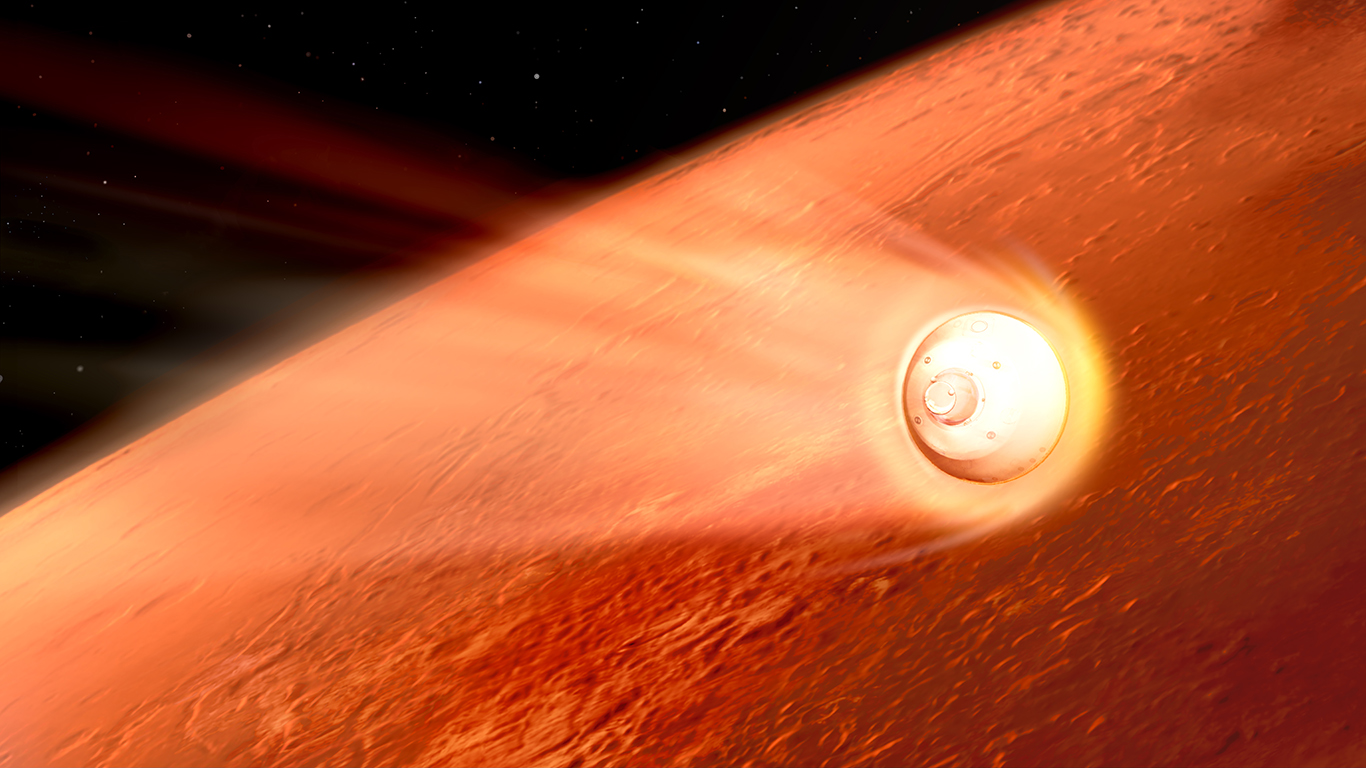
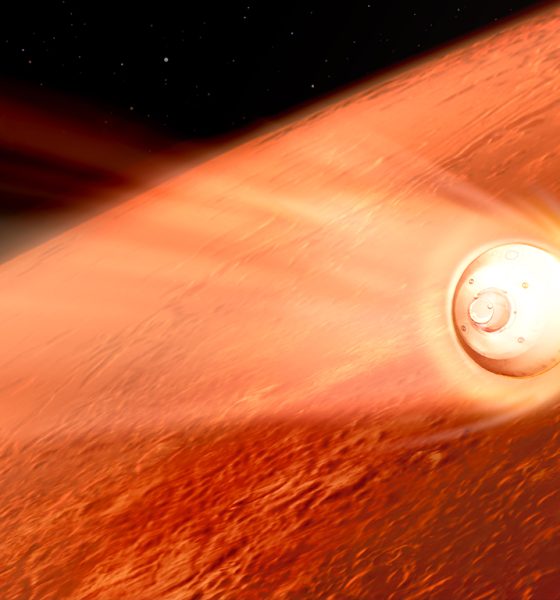
News
NASA Mars rover promises blazing entrance after China, UAE make it to Mars orbit
The month of the robotic invasion of Mars is upon us. Seven months ago, the United States, China, and the United Arab Emirates launched missions on a 300 million mile (480 million kilometer) journey to Mars.
Last week, two of the three missions quietly arrived and inserted themselves into Mars orbit. The final spacecraft to arrive, NASA’s Mars 2020 Perseverance mission, however, will not go gently into the Martian atmosphere. On Thursday, February 18, NASA’s latest Mars mission destined to uncover evidence of ancient microbial life on the distant planet is set to touchdown following a spectacular display of extremely complex engineering.
Getting to Mars
Launching to the Red Planet is a strategic maneuver that can only be completed once every two years. This is due to the varying speeds and the elliptical shape of the planets’ orbits around the sun. The point at which Earth and Mars are aligned close enough to minimize travel time, called an opposition, occurs only once every two years.
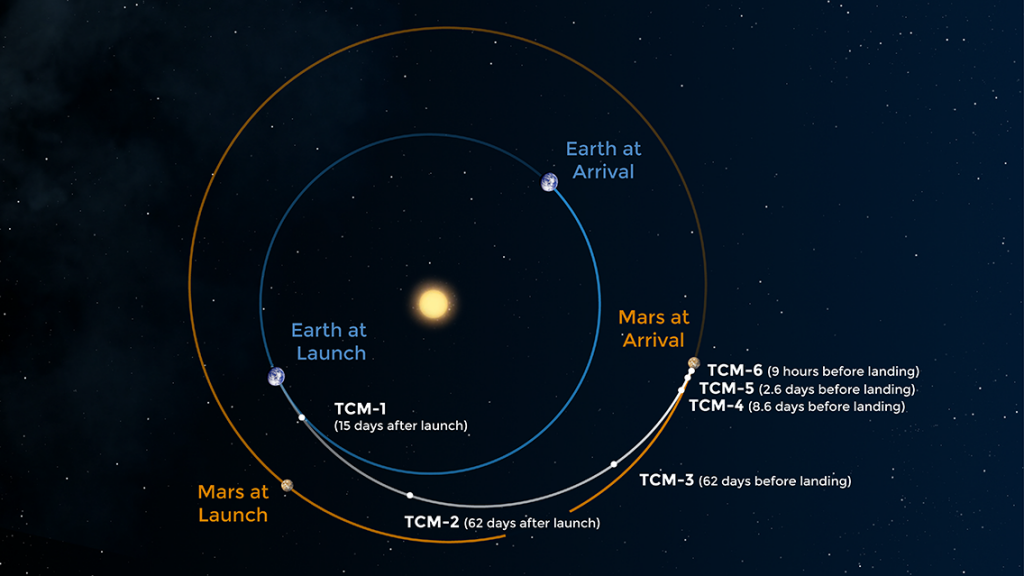
The update that's rolling out to the fleet makes full use of the front and rear steering travel to minimize turning circle. In this case a reduction of 1.6 feet just over the air— Wes (@wmorrill3) April 16, 2024
The most recent opposition occurred in July 2020. Four international Mars missions were intended to leave Earth that summer, however, due to required further certification of parachutes the European Space Agency’s ExoMars Rosalind Franklin rover would have to wait for its launch opportunity during the next planetary opposition to occur in 2022. That left three robotic invaders from the United States, the United Arab Emirates, and China to escape Earth’s orbit and become interplanetary superstars.
Hope arrives to Mars
The United Arab Emirates Space Agency’s first-ever interplanetary mission, a spacecraft named Al-Amal, or the Hope Probe, was developed in collaboration between the Mohammed bin Rashid Space Center, Laboratory for Atmospheric and Space Physics at the University of Colorado Boulder, Arizona State University, and the Space Sciences Lab at the University of California, Berkeley. It was launched on July 19, 2020, from Tanegashima Space Centre in Japan aboard an H2A202 rocket. On Tuesday, February 9, the Hope Probe was the first of the three missions to complete the journey to Mars and successfully insert itself into orbit.
The Hope Probe arrived to near-Mars orbit traveling approximately 75,000 mph (121,000 kph), far too fast to successfully achieve a safe Martian orbital insertion maneuver. In order to slow down to the approximate 11,000mph (18,000 kph) needed to be captured by Mars orbit, the spacecraft had to autonomously fire its main thrusters and perform a Mars Orbit Insertion burn lasting an agonizing 27 minutes. To compensate in the instance of a thruster failure, there was a backup safety protocol that would’ve doubled the length of the burn. After 27 grueling minutes, the Mohammad Bin Rashid Space Center located in Dubai reported that the maneuver was completed successfully and the Hope Probe had arrived at its final destination.
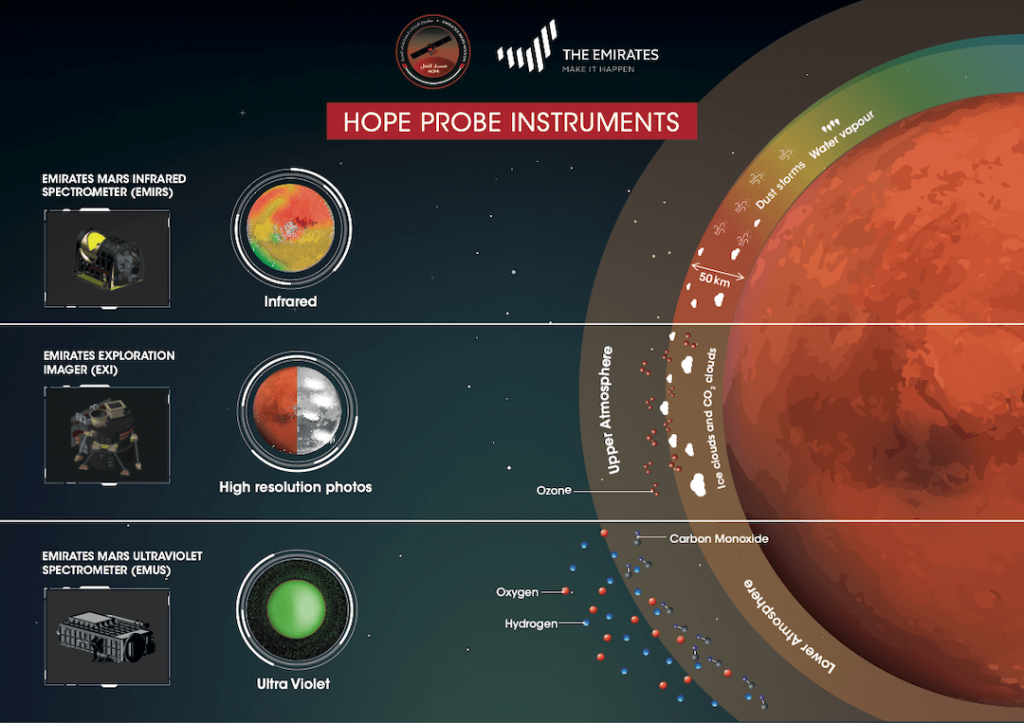
Unlike the American and Chinese missions to Mars which will land rovers on the surface, the United Arab Emirates’ Hope Probe will remain in Mars orbit for the duration of its mission – approximately two Martian years. The spacecraft is equipped with a suite of three instruments, two spectrometers – one infrared and one ultraviolet – to study the Martian atmosphere, and one imager to capture high-resolution images to study the surface from afar.
China’s Tianwen-1 Rover will hang out in orbit before landing in May
The same type of Mars Orbit Insertion maneuver was completed by China’s first interplanetary mission, the Tianwen-1 spacecraft. Launched from China on July 23, 2020, Tianwen-1 arrived at Mars orbit just one day after the Hope Probe on Wednesday, February 10.
The Tianwen-1 spacecraft had to autonomously complete an excruciating 11-minute “braking” burn to slow down which took it behind the planet as it was captured by Mars gravity and entered into orbit.
Like NASA’s Perseverance, the Tianwen-1 mission features a rover that will eventually land on the surface of Mars. The process to get the rover to the surface, however, varies from that of NASA’s Mars 2020 Perseverance mission.
The Tianwen-1 spacecraft is made of two components, an orbiter and a rover. Currently, it is planned that the orbiter will spend some time in Mars orbit for a period of comprehensive observation before attempting a landing of the rover in May. Ideally, the spacecraft will then touch down in a region known as Utopia Planitia.
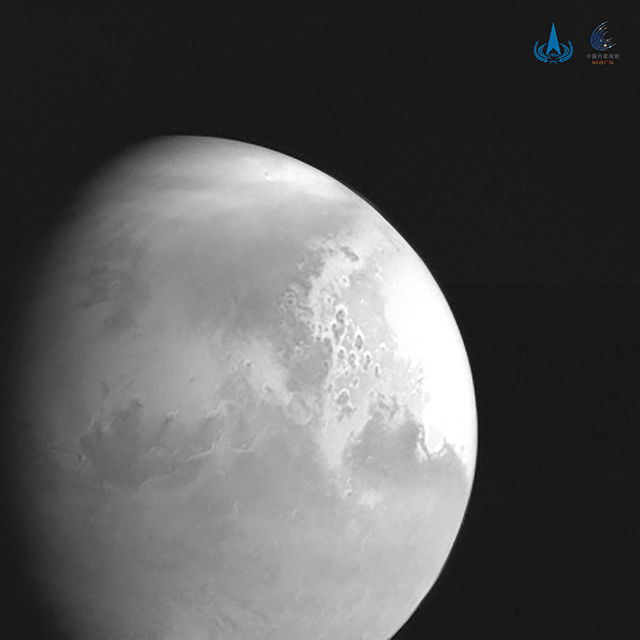
The update that's rolling out to the fleet makes full use of the front and rear steering travel to minimize turning circle. In this case a reduction of 1.6 feet just over the air— Wes (@wmorrill3) April 16, 2024
Once the rover safely makes it to the surface it will initiate the investigation period of the mission. The rover carries a suite of scientific instruments that will be used to investigate the composition of the Martian surface searching for the potential distribution of water and ice. Similar to China’s Yutu 2 rover which is exploring the Moon, the Tianwen-1 rover also carries a panoramic camera to image the planet.
Perseverance and Ingenuity like no other
The last of the three Mars missions – NASA’s Mars 2020 Perseverance mission launched on July 30, 2020, from Cape Canaveral Space Force Station aboard a United Launch Alliance Atlas 5 rocket. As far as Mars arrivals go, the best has certainly been saved for last. Following the success of the other two missions from China and the United Arab Emirates, the stage is set for Perseverance to make its dramatic entrance.
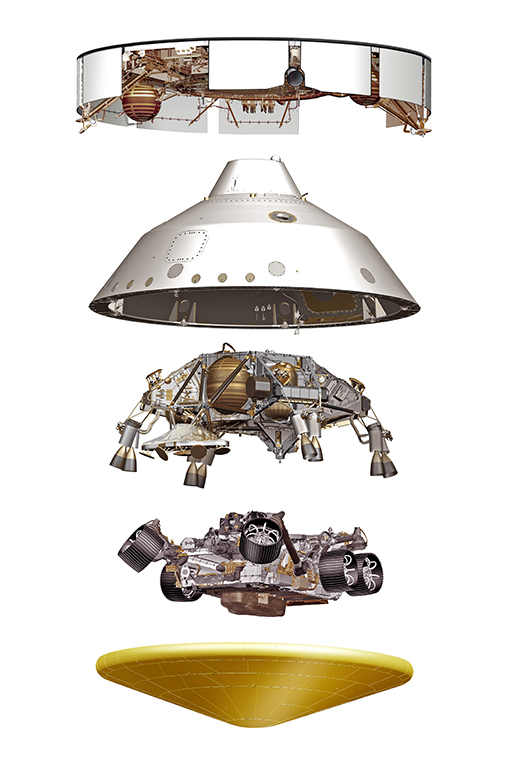
NASA’s Mars 2020 Perseverance mission is by far the most ambitious mission to launch to Mars during the 2020 planetary transfer window. NASA is not attempting to land one, but two spacecraft on the surface of Mars. The $2.4 billion Mars 2020 mission is comprised of the Perseverance rover – powered by the heat produced by radioactive decay of Plutonium – and a first of its kind rotary helicopter called Ingenuity. It is scheduled to arrive in dramatic fashion on Thursday, February 18.
Rather than conducting a braking maneuver to slow down and enter Mars orbit, the Perseverance spacecraft will autonomously conduct the entry, descent, and landing (EDL) procedure – essentially going from traveling several thousand miles an hour to descending slowly under a parachute canopy to softly land in mere minutes.
The spacecraft – housed in a protective aeroshell with its robust heat shield facing the planet’s surface – will burst into Mars’ atmosphere traveling nearly 12,500 mph (20,000 kph). Once through, Pesevereance will ditch its heat shield and autonomously begin scanning the Martain terrain to determine its relative location and make adjustments to find an optimal landing spot. Then, a powered descent module will deploy transporting the rover the rest of the way down slowing to less than 2mph (3kph). Finally, the descent module will hover and deploy a complex harness system lowering Perseverance – and its stowaway, the Ingenuity helicopter – to the Martian surface for touchdown.
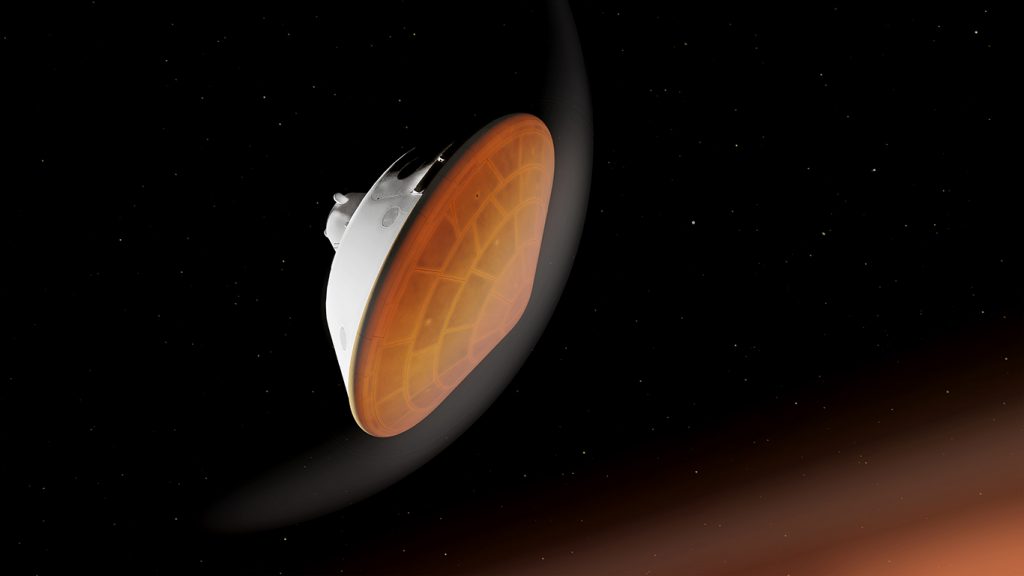
After seven months of interplanetary travel, it all comes down to the final seven minutes – the length of time the EDL process is expected to take. All spacecraft controllers back on Earth can do is watch and wait for that final telemetry reading indicating that Perseverance has successfully touched down. That is why this process has earned the nickname “seven minutes of terror.”
Beginning around 11:15 am PST (19:15 UTC) on Thursday, February 18th, NASA will provide live coverage of Perseverance’s landing attempt. The agency will carry the coverage on NASA TV and its website, as well as a number of other platforms including YouTube, Twitter, Facebook, LinkedIn, Twitch, Daily Motion, Theta.TV, and NASA App.

News
Tesla dispels reports of ‘sales suspension’ in California
“This was a “consumer protection” order about the use of the term “Autopilot” in a case where not one single customer came forward to say there’s a problem.
Sales in California will continue uninterrupted.”

Tesla has dispelled reports that it is facing a thirty-day sales suspension in California after the state’s Department of Motor Vehicles (DMV) issued a penalty to the company after a judge ruled it “misled consumers about its driver-assistance technology.”
On Tuesday, Bloomberg reported that the California DMV was planning to adopt the penalty but decided to put it on ice for ninety days, giving Tesla an opportunity to “come into compliance.”
Tesla enters interesting situation with Full Self-Driving in California
Tesla responded to the report on Tuesday evening, after it came out, stating that this was a “consumer protection” order that was brought up over its use of the term “Autopilot.”
The company said “not one single customer came forward to say there’s a problem,” yet a judge and the DMV determined it was, so they want to apply the penalty if Tesla doesn’t oblige.
However, Tesla said that its sales operations in California “will continue uninterrupted.”
It confirmed this in an X post on Tuesday night:
This was a “consumer protection” order about the use of the term “Autopilot” in a case where not one single customer came forward to say there’s a problem.
Sales in California will continue uninterrupted.
— Tesla North America (@tesla_na) December 17, 2025
The report and the decision by the DMV and Judge involved sparked outrage from the Tesla community, who stated that it should do its best to get out of California.
One X post said California “didn’t deserve” what Tesla had done for it in terms of employment, engineering, and innovation.
Tesla has used Autopilot and Full Self-Driving for years, but it did add the term “(Supervised)” to the end of the FSD suite earlier this year, potentially aiming to protect itself from instances like this one.
This is the first primary dispute over the terminology of Full Self-Driving, but it has undergone some scrutiny at the federal level, as some government officials have claimed the suite has “deceptive” naming. Previous Transportation Secretary Pete Buttigieg was vocally critical of the use of the name “Full Self-Driving,” as well as “Autopilot.”
News
New EV tax credit rule could impact many EV buyers
We confirmed with a Tesla Sales Advisor that any current orders that have the $7,500 tax credit applied to them must be completed by December 31, meaning delivery must take place by that date. However, it is unclear at this point whether someone could still claim the credit when filing their tax returns for 2025 as long as the order reflects an order date before September 30.
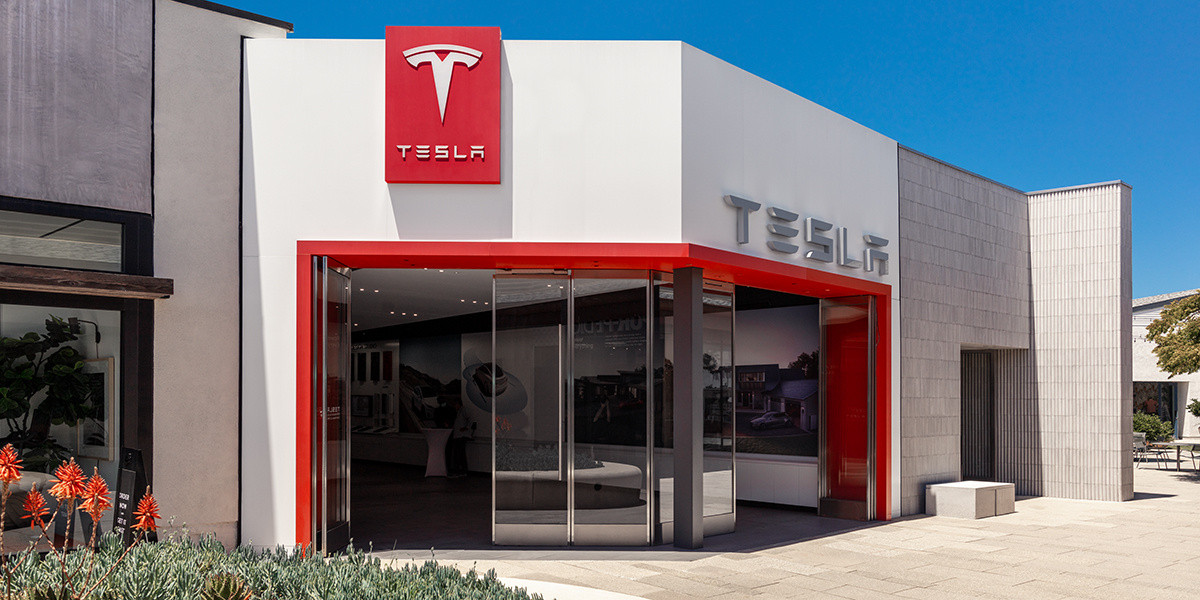
Tesla owners could be impacted by a new EV tax credit rule, which seems to be a new hoop to jump through for those who benefited from the “extension,” which allowed orderers to take delivery after the loss of the $7,500 discount.
After the Trump Administration initiated the phase-out of the $7,500 EV tax credit, many were happy to see the rules had been changed slightly, as deliveries could occur after the September 30 cutoff as long as orders were placed before the end of that month.
However, there appears to be a new threshold that EV buyers will have to go through, and it will impact their ability to get the credit, at least at the Point of Sale, for now.
Delivery must be completed by the end of the year, and buyers must take possession of the car by December 31, 2025, or they will lose the tax credit. The U.S. government will be closing the tax credit portal, which allows people to claim the credit at the Point of Sale.
🚨UPDATE: $7,500 Tax Credit Portal “Closes By End of Year”.
This is bad news for pending Tesla buyers (MYP) looking to lock in the $7,500 Tax Credit.
“it looks like the portal closes by end of the year so there be no way for us to guarantee the funds however, we will try our… pic.twitter.com/LnWiaXL30k
— DennisCW | wen my L (@DennisCW_) December 15, 2025
We confirmed with a Tesla Sales Advisor that any current orders that have the $7,500 tax credit applied to them must be completed by December 31, meaning delivery must take place by that date.
However, it is unclear at this point whether someone could still claim the credit when filing their tax returns for 2025 as long as the order reflects an order date before September 30.
If not, the order can still go through, but the buyer will not be able to claim the tax credit, meaning they will pay full price for the vehicle.
This puts some buyers in a strange limbo, especially if they placed an order for the Model Y Performance. Some deliveries have already taken place, and some are scheduled before the end of the month, but many others are not expecting deliveries until January.
Elon Musk
Elon Musk takes latest barb at Bill Gates over Tesla short position
Bill Gates placed a massive short bet against Tesla of ~1% of our total shares, which might have cost him over $10B by now
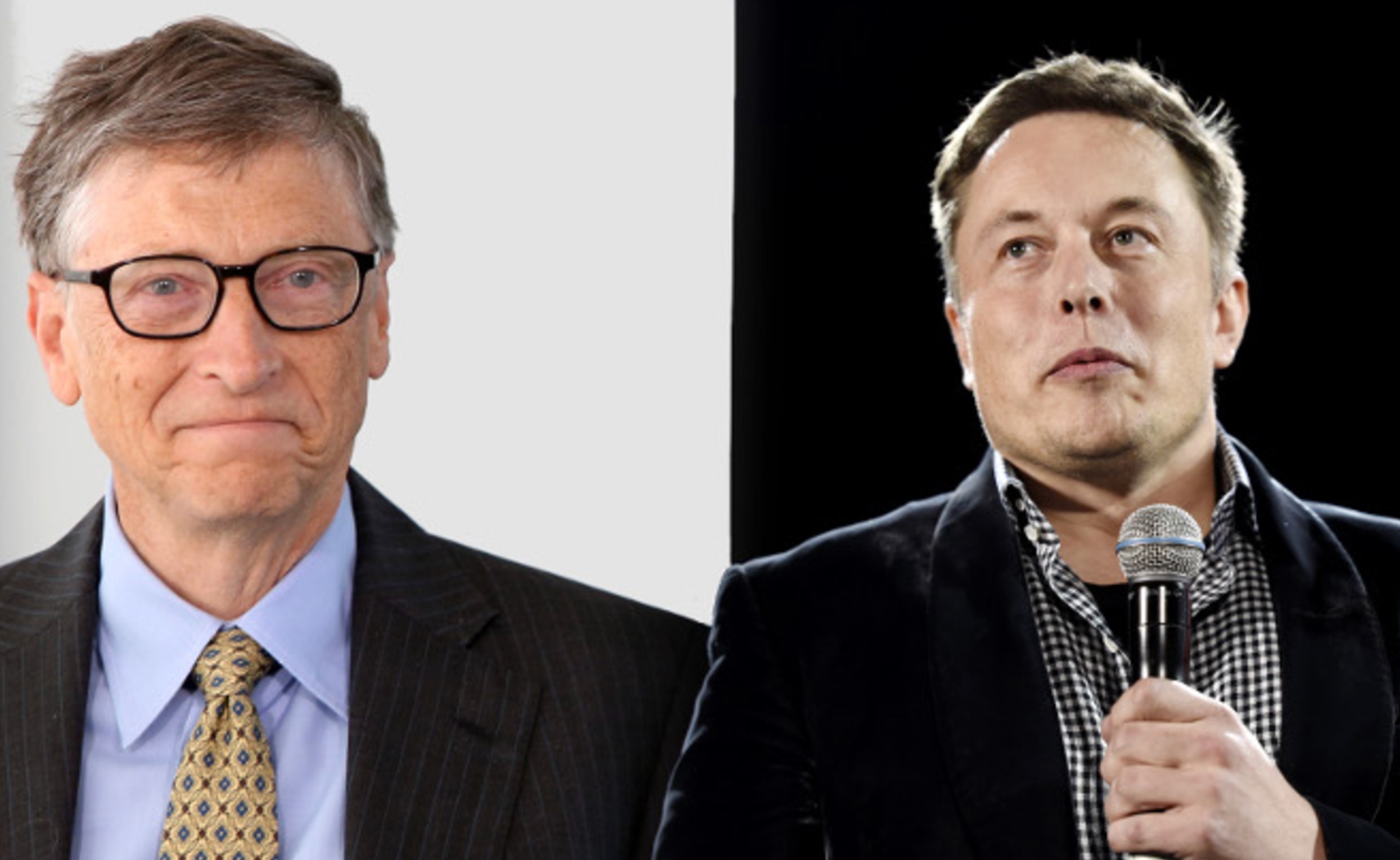
Elon Musk took his latest barb at former Microsoft CEO Bill Gates over his short position against the company, which the two have had some tensions over for a number of years.
Gates admitted to Musk several years ago through a text message that he still held a short position against his sustainable car and energy company. Ironically, Gates had contacted Musk to explore philanthropic opportunities.
Elon Musk explains Bill Gates beef: He ‘placed a massive bet on Tesla dying’
Musk said he could not take the request seriously, especially as Gates was hoping to make money on the downfall of the one company taking EVs seriously.
The Tesla frontman has continued to take shots at Gates over the years from time to time, but the latest comment came as Musk’s net worth swelled to over $600 billion. He became the first person ever to reach that threshold earlier this week, when Tesla shares increased due to Robotaxi testing without any occupants.
Musk refreshed everyone’s memory with the recent post, stating that if Gates still has his short position against Tesla, he would have lost over $10 billion by now:
Bill Gates placed a massive short bet against Tesla of ~1% of our total shares, which might have cost him over $10B by now
— Elon Musk (@elonmusk) December 17, 2025
Just a month ago, in mid-November, Musk issued his final warning to Gates over the short position, speculating whether the former Microsoft frontman had still held the bet against Tesla.
“If Gates hasn’t fully closed out the crazy short position he has held against Tesla for ~8 years, he had better do so soon,” Musk said. This came in response to The Gates Foundation dumping 65 percent of its Microsoft position.
Tesla CEO Elon Musk sends final warning to Bill Gates over short position
Musk’s involvement in the U.S. government also drew criticism from Gates, as he said that the reductions proposed by DOGE against U.S.A.I.D. were “stunning” and could cause “millions of additional deaths of kids.”
“Gates is a huge liar,” Musk responded.
It is not known whether Gates still holds his Tesla short position.











